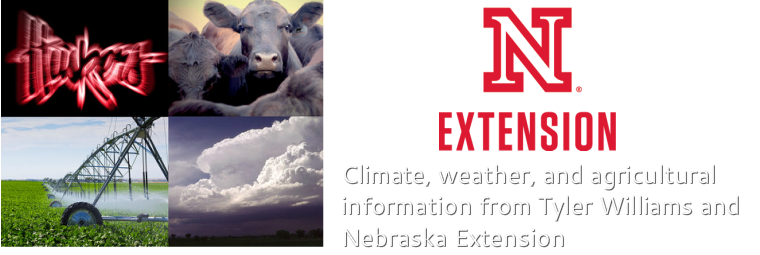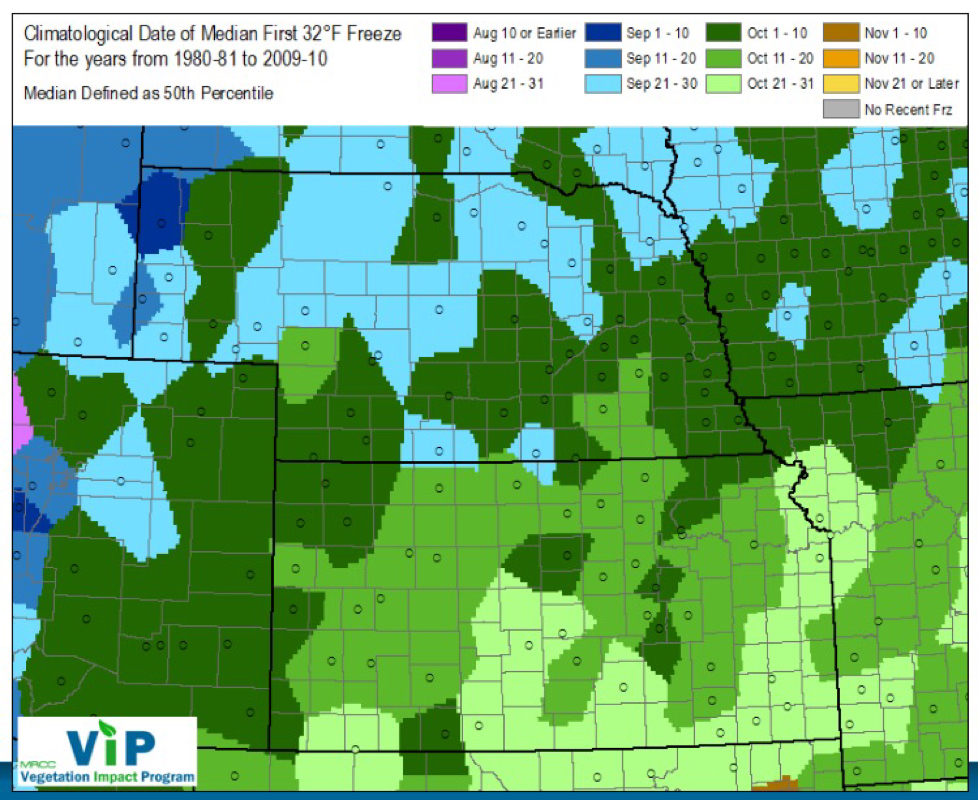The average first 32F freeze from 1981-2010 (most recent climate normals) for Nebraska is during the last 10 days of September for most of western and northern Nebraska and the first 10 days of October for southern and Eartern Nebraska. The latest date for the first 32F freeze for the same time period was the first week of November for the southeast and the middle of October for the northwest. For the other extreme (the earliest first freeze), came during the middle of September for most of Nebraska with the far northwest panhandle having its earliest first freeze in the middle of August. This illustrates the wide range of possibilities for the first 32F freeze for Nebraska. There is a two month window for the first freeze, which may provide opportunity for late fall growth of grasses or cover crops. However, an unseasonably early freeze may limit crop maturity. This is a challenge every year for crop producers and forecasts out past 7 days just aren't able to accurately predict the potential of a frost. The lack of long range freeze forecasts limits the ability to make management decisions that may be able to capture an extended growing season or prevent problems from an early ending.
|
|
AuthorI study weather and climate impacts on agriculture, climate variability, and using weather and climate information to make better agricultural decisions. Archives
November 2017
|


 RSS Feed
RSS Feed
